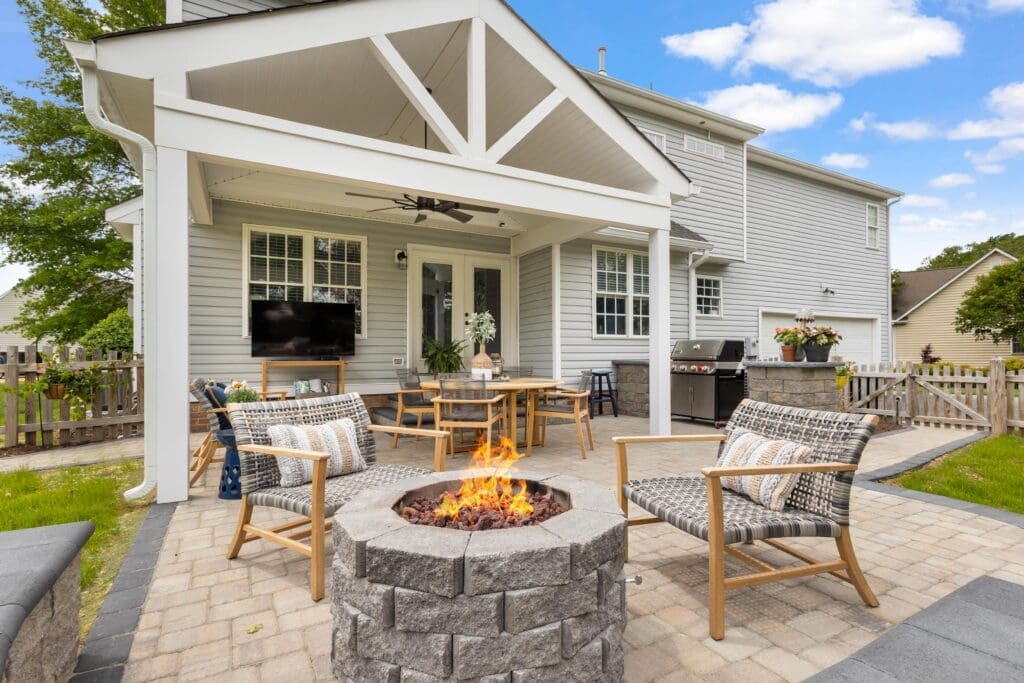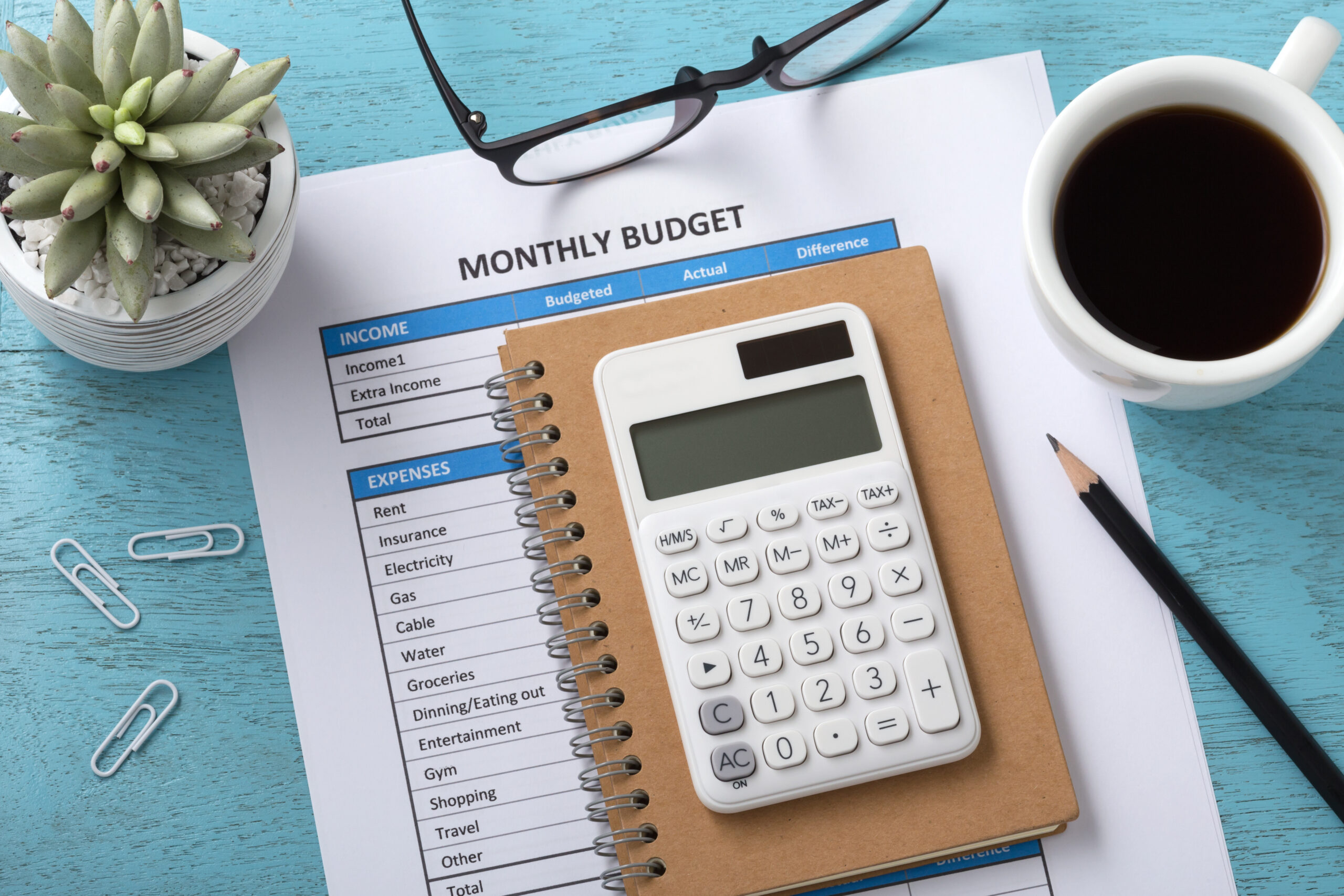Embarking on a home remodeling project can be an exciting and rewarding endeavor, whether you’re looking to update your kitchen, add a new room, or give your entire home a fresh look. However, one of the biggest decision homeowners face is securing the necessary financing to turn their remodeling dreams into reality. Fortunately, there are various options for home renovation loans available to fund your project.
The guide below is meant to provide a preliminary, informational review of the most common home renovation loans. Starting a renovation project will require you to make many decisions but determining how to pay for the project is critical. A home renovation project is exciting, but being unable to make a payment to your contractor will take add strain to the situation. Planning ahead is key to making the financial aspect of the process as smooth as possible. This article is for information purposes only, so please contact a financial expert prior to making any decisions and for evaluating your individual situation.

I. Make a Budget
Before seeking financing, it’s crucial to set a budget for your home renovation project. We recommend using an 80-10-10 approach.
- Determine the total amount you wish to spend on the project (100%).
- 80% – is the target you want to keep in mind while designing the project.
- 10% – is your splurge fund for adding elements to personalize your project.
- 10% – is your reserve for when during construction an issue arises.
Here is a real-life budget scenario:

James and Lilly want to replace their deck and add a paver patio at the bottom of the stairs. Their max budget for the project is $40,000. So, this gives them $32,000 to set the size of the deck and patio and select materials. At the end of the design phase, Lauren realized the corner of the patio was perfect for a fire pit. Thankfully she has $4000 to cover the splurge. The design is now finalized and the construction begins a few weeks later. But while the existing deck is being torn down, the contractor finds extensive rot along the band of the house. This becomes an absolutely necessary change order for $950. Thankfully, James and Lilly don’t have to stress because they have the reserve fund.
Armed with your budget, the next step is to explore financing options.
II. Factors to Consider with Every Option
Let us start by discussing the most common options for home renovation loans. Whether a lending institution, bank or credit union, the loan office will ask for personal financial details, such as your credit report and debt to income ratio. Expect the terms of the loan to vary between the options.
Topics to Research
- Interest Rate: Compare interest rates and fees associated with each loan option. A lower interest rate can save you money over the life of the loan. If the loan offers a choice between fixed and variable interest rates, understand the differences and consider which one best fits your financial situation. Just remember, you can refinance a fixed rate loan in the future if rates drop.
- Loan Terms: Examine the repayment terms, including the length of the loan and the monthly payment amount. Choose terms that remain within your budget and align to your financial goals. Understand the loan’s terms, including the length of the loan (loan duration) and the monthly payment amount. Longer terms may have lower monthly payments but potentially higher total costs.
- Find out if the loan has prepayment penalties, which are fees charged for paying off the loan early. These penalties can impact your ability to save on interest costs. No pre-payment penalties is usually preferred.
- Tax Implications: Consider any potential tax benefits associated with home equity loans or mortgages, as the interest may or may not be tax-deductible in certain cases.
- Amount Needed: Determine the maximum amount you need for your home improvement project and ensure that the loan option you choose provides adequate funds.
- Your Financial Situation: Evaluate your overall financial situation, including your credit score, income, and existing debt obligations.
- Time to Closing: ask how long the process will take. Be up front with your contractor about when you anticipate being able to sign the contract.
The Pros and Cons of Home Renovation Loans
Improving your home does have benefits. But there are also factors which may lead you to decide to postpone the project. Just be sure to take in account your needs today and five years from now. A home renovation is principally a long-term decision.
The Pros of Home Improvement Loans
Some advantages of a loan are the following:
- Increased Home Value
- Investing in your home can lead to increased property value. Home renovation loans allow you to make these valuable changes, potentially making your home more appealing to future buyers. The renovation may result in the true cost of the project being notably less expensive when considering future appreciation.
- Enhanced Comfort and Livability
- Home improvements can make your living space more comfortable and functional. Whether it’s a new kitchen, a larger bathroom, or an energy-efficient HVAC system, these changes can enhance your quality of life. Over the past few years home inventory has been limited, so homeowners are finding it easier to create a custom dream space than find the perfect new home that matches their wish list.
- Existing vs. New Mortgage Conundrum
- The main question today is: Do I want an 8% interest rate on my entire mortgage balance or just the cost for renovation project?
- According to Redfin, 62% of all U.S. mortgages have an interest rate below 4%. So you have two options: 1) move to a new home or 2) renovate your existing home. In addition to the cost of moving and losing equity to realtor fees, the new interest rate on your entire mortgage may cost you significantly more than the cost of your renovation project. At an 8% rate on a $400,000 loan, the homeowner will pay about $1000 more per MONTH in interest expense. Over four years, you’ll spend 48,000 on interest expense. Is the new home or renovation a better use of $48,000?
- Interest Tax Deductions
- The interest on home improvement loans may be tax-deductible if the improvements are considered a capital expense that increases the value of your home. Check with a tax professional for details.
- Flexible Financing Options
- Home improvement loans come in various forms, including personal loans, home equity loans, and home equity lines of credit (HELOCs). This flexibility allows you to choose the financing option that best suits your needs and financial situation.
- Payment Predictability
- With a fixed-rate home improvement loan, you’ll have predictable monthly payments, making budgeting easier. This stability can help you plan your finances effectively.
- Quick Access to Funds
- Many home improvement loans have a relatively straightforward application and approval process, giving you quick access to the funds you need for your projects. Often your contractor can recommend a good financing option.
The Cons of Home Improvement Loans
Some disadvantages of a loan are the following:
- Interest Costs
- While home improvement loans provide the necessary funds, they come with interest costs. You’ll need to repay the loan with interest, which can add up over time.
- Debt Obligation
- Taking out a loan means adding to your debt load. You’ll need to factor in these monthly payments when managing your overall financial obligations.
- Risk to Home Equity
- Home equity loans and HELOCs use your home as collateral. If you can’t make the payments, you risk losing your home. It’s crucial to weigh this risk carefully.
- Approval Criteria
- Securing a home improvement loan may require a good credit score and financial stability. If your credit history is less than stellar, you might face challenges in obtaining favorable loan terms.
- Project Costs Can Escalate
- Home improvement projects often encounter unforeseen costs or complications. Borrowing a specific amount may not cover these extra expenses, leaving you in a financial bind.
- Potential Over-improvement
- It’s possible to invest more in your home improvements than you can recoup in added value. Be mindful of over-improvement by keeping watch of the total loan balance, which may not provide a good return on investment.
III. Are There Different Types of Home Renovation Loans?
Home improvement loans have five different kinds: personal, cash-out loans, home rehabilitative loans, and HELOC loans. These loans may also assist with the financing of home improvements
Home equity line of credit (HELOC)
HELOCs are secured loans which are backed up by a home. HELOCs are a revolving credit that allows you to use the amount you need. This is a flexible option and is suitable for long-term projects. Because the house you are building is your collateral this can be foreclosed if your payments are not made on time. Keep in mind that HELOCs often have variable interest rates that can cause you to pay more if the economy has changed.
Home Equity Loan
A home equity loan may be applied, also called second mortgages. The mortgage is secured by allowing borrowers with equity to use their home to secure financing. The loan is given in one lump sum, which could be paid back in regular fixed monthly payments. If you have excellent credit, a bank or a credit union is a great first contact for an equity loan.
There is an added risk of losing your home owing more than your home will be worth. Unlike mortgage loans with HELOC loans, cash-out refinances are available.
Unsecured personal loan
If you need help financing your own home renovations but lack home equity, the option may be a solid solution. These loans are typically unsecured, offer quick approval, typically have a fixed monthly payment, and many institutions get you the money within 24 hours. Personal loans generally have a shorter repayment period, often between 2 to 5 years.
Cash-out Refinance
Using a cashout refinance essentially use equity in your property to pay for the renovation project. This will result in a larger loan on the property at a current mortgage rate.
FHA 203(k) rehab loan
The FHA 203k rehab loan is provided to the federal housing authorities and it combines costs for mortgages and renovations into one loan, which is especially useful for those buying fixer uppers. House purchases and renovation work can be funded by this program without a separate mortgage application. The loan includes several advantages, including lower interest rates and a lower down payment. It is accessible even without good credit.
Credit cards
Using a credit card for a home renovation offers both advantages and drawbacks. On the positive side, credit cards provide convenient access to funds, allowing homeowners to initiate and complete renovation projects swiftly. They often come with attractive rewards, such as cashback or travel points, which can add up and offer financial incentives for using the card.
Additionally, credit cards can provide a degree of flexibility in managing expenses, with the option to pay off the balance over time. Be sure to consult with a financial advisor about the benefits and risks associated with using a credit card; here is a primer on the topic. High-interest rates on credit card balances can lead to substantial long-term costs, making it potentially more expensive compared to other financing options like home equity loans.
Overspending and accumulating debt can also become a concern, as credit cards can make it easier to exceed the renovation budget. It’s crucial to weigh these pros and cons carefully and consider alternative financing methods before opting for a credit card for your home renovation..
IV. Financing for Emergencies Without Credit
Fortunately, some lenders are providing a specific loan specifically to people who have poor-performing accounts. A loan may allow you to combine several debts into one payment and potentially secure a lower repayment rate. Here are a few options to explore:
- FHA 203(k) Loan: The Federal Housing Administration (FHA) offers the 203(k) loan program, which is designed for homebuyers and homeowners looking to finance both the purchase of a home and its renovation. FHA loans are more lenient in terms of credit requirements, making them accessible to borrowers with lower credit scores.
- Home Equity Loan or HELOC with Co-Signer: If you have a co-signer with good credit willing to share responsibility for the loan, you may be able to secure a home equity loan or home equity line of credit (HELOC). The co-signer’s credit can help you qualify for better terms.
- Government Grants and Assistance Programs: Some local, state, or federal government programs provide grants or low-interest loans for home improvement projects, especially for low-income homeowners. These programs may have more relaxed credit requirements.
- Secured Personal Loan: A secured personal loan is backed by collateral, such as a savings account or a valuable asset. With collateral, lenders may be more willing to lend to individuals with bad credit, as the risk is reduced.
- Peer-to-Peer Lending: Peer-to-peer (P2P) lending platforms connect borrowers with individual investors. These platforms may have more flexible lending criteria, allowing you to find a loan despite your credit score. Be prepared for potentially higher interest rates.
- Credit Unions: Some credit unions are more lenient in their lending criteria compared to traditional banks. They may offer personal loans or credit builder loans to help individuals with bad credit improve their credit scores while financing home improvements.
- Retailer Financing: If you’re purchasing materials or services from a home improvement store, they may offer in-house financing options. These may be accessible to borrowers with less-than-perfect credit, but be cautious about high-interest rates.
- Friends and Family Loans: If you have friends or family members who are willing to lend you money, this could be a low-cost option, as you might negotiate favorable terms. Just keep in mind that if you borrow money from a family member or friend, the transaction may include emotional or relational conditions.
V. In Conclusion
You can make a well-informed decision about the best home renovation loan for your specific project and financial situation. Please consult with a financial advisor to ensure you’re making the right choice for your needs and goals.
Once your financial situation is set, you’re ready to start designing your project. Fill out our estimate form, and we’ll be in touch to help bring your backyard dreams into reality.
VI. Common Questions
Is a HELOC a good idea for home improvement?
HELOCs have become one of the smartest ways for borrowers to pay for home repairs. Usually homeowners are using HELOCs for major renovations because their interest rates are cheaper than credit cards and, like your primary mortgage offer a fixed monthly mortgage payment.
What is the interest rate on the loan?
Ask the institution assisting you with the loan. A lower interest rate can result in lower overall costs.
Are There Any Origination Fees or Closing Costs?
Ask about any upfront fees associated with the loan, such as origination fees or closing costs, as they can add to the overall cost of borrowing.
Is the Loan Secured or Unsecured?
Determine if the loan is secured by collateral, such as your home, or if it’s an unsecured personal loan. Secured loans typically offer lower interest rates.
What Is the Application and Approval Process Like?
Inquire about the loan application process, approval timeline, and documentation requirements. Understanding the steps involved will help you plan accordingly.
How Does the Loan Impact My Credit Score?
Ask your loan officer how taking out the loan may affect your credit score and what steps you can take to protect or improve your credit during and after the renovation.
Are There Any Government Programs or Grants Available for My Renovation Project?
Research any local, state, or federal government programs or grants that might be available to help fund your renovation. There are often programs specifically design for renovations of historical projects. Government provided benefits may include special tax deductions or freezing your property tax rate for a set number of years.
What Insurance or Guarantees Are Provided with the Loan?
A loan office can assist with specifics. Inquire about any insurance or guarantees associated with the loan, such as loan protection insurance or builder warranties.
Can I Use the Loan for DIY Renovations?
Verify with your loan officer whether the loan can be used for do-it-yourself (DIY) renovations or if it requires professional contractors.
What Are the Repayment Options?
The loan office will review the options. Make sure you fully understand the specifics about the loan. Ask for clarify about repayment options, such as monthly installments, interest-only payments, or deferred payments for a certain period.
What Happens if I Can’t Make a Payment?
Ask your loan officer what the consequences are if you can’t make a payment due to unforeseen circumstances and inquire about any hardship programs or forbearance options.
Is There a Deadline for Completing the Renovation?
If the loan has a specific timeline for completing the renovation, ensure you have a realistic project schedule in place.
Disclaimer
The Content is for informational purposes only, you should not construe any such information or other material as legal, tax, investment, financial, or other advice. Nothing contained on our Site constitutes a solicitation, recommendation, endorsement, or offer by Deck Creations or any third party service provider to buy or sell any securities or other financial instruments in this or in in any other jurisdiction in which such solicitation or offer would be unlawful under the securities laws of such jurisdiction.
All Content on this site is information of a general nature and does not address the circumstances of any particular individual or entity. Nothing in the Site constitutes professional and/or financial advice, nor does any information on the Site constitute a comprehensive or complete statement of the matters discussed or the law relating thereto. Deck Creations is not a fiduciary by virtue of any person’s use of or access to the Site or Content.
You alone assume the sole responsibility of evaluating the merits and risks associated with the use of any information or other Content on the Site before making any decisions based on such information or other Content. In exchange for using the Site, you agree not to hold Deck Creations, the author, its affiliates, or any third party service provider liable for any possible claim for damages arising from any decision you make based on information or other Content made available to you through the Site.
Any scenario or people mentioned are fictional. Names, characters, places and incidents either are products of the author’s imagination or are used fictitiously. Any resemblance to actual events or locales or persons, living or dead, is entirely coincidental.
WE MAKE NO CLAIMS OR REPRESENTATIONS AS TO THE ACCURACY, COMPLETENESS, OR TRUTH OF ANY MATERIAL CONTAINED ON OUR SITE. NOR WILL WE BE LIABLE FOR ANY ERRORS INACCURACIES OR OMISSIONS, AND SPECIFICALLY DISCLAIMS ANY IMPLIED WARRANTIES OR MERCHANTABILITY OR FITNESS FOR ANY PARTICULAR PURPOSE AND SHALL IN NO EVENT BE LIABLE FOR ANY LOSS OF PROFIT OR ANY OTHER COMMERCIAL OR PROPERTY DAMAGE, INCLUDING BUT NOT LIMITED TO SPECIAL, INCIDENTAL, CONSEQUENTIAL, OR OTHER DAMAGES; OR FOR DELAYS IN THE CONTENT OR TRANSMISSION OF THE DATA ON OUR SITE, OR THAT THE SITE WILL ALWAYS BE AVAILABLE.







